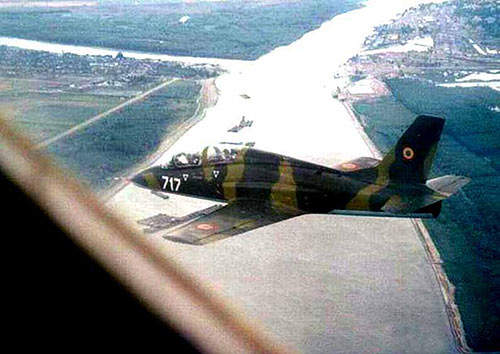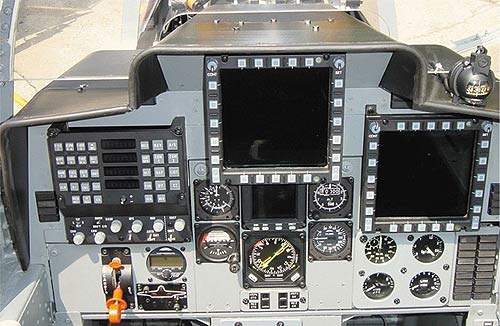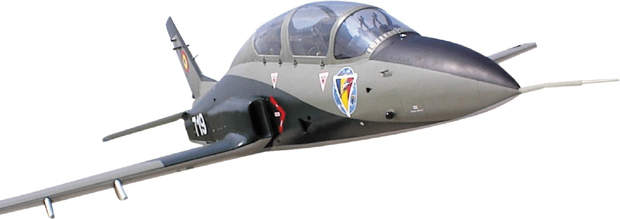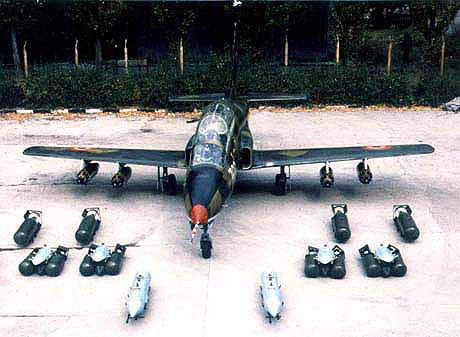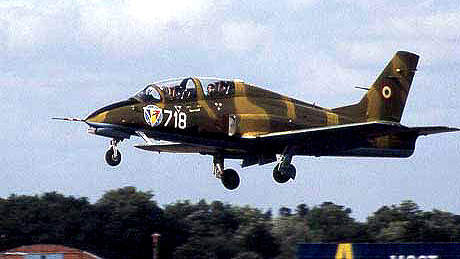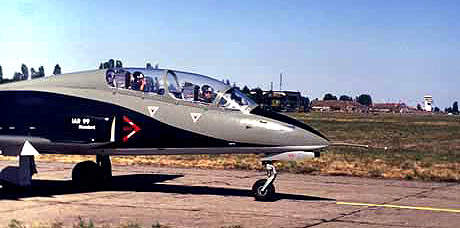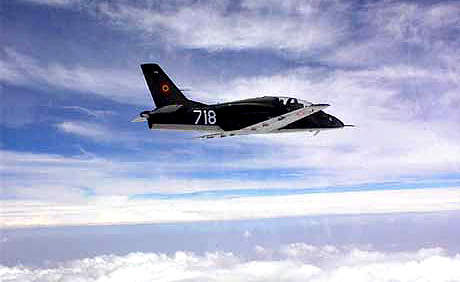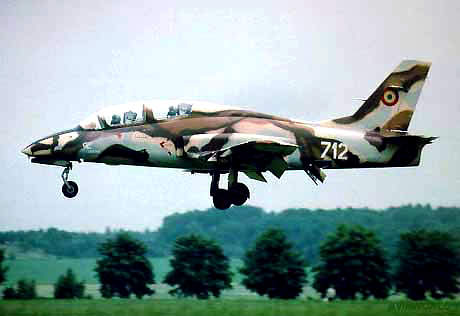In November 2004, the Romanian Ministry of Defence awarded a contract to Avioane Craiova SA and Elbit Systems for the production of the IAR-99C Soim advanced jet trainer. Eight aircraft will be manufactured for the Romanian Air Force and the aircraft are also being offered for export. The aircraft will enter service with the Romanian Air Force by 2008. The contract follows a previous order in 2001 for the upgrade of four IAR-99 aircraft that are now in service with the Romanian Air Force.
The Romanian Air Force will use the IAR-99C as the lead in fighter trainer aircraft towards the MiG-21 Lancer multi-role attack aircraft and towards future advanced jet fighters. The Romanian Air Force has 17 of the standard IAR-99 trainer aircraft in service with the 67th Fighter Bomber Group based at Craiova.
The aircraft, which can perform close air support roles, has high agility with a g-limit of +7 to -3.6G and a maximum operating speed of 0.76 Mach. The tightest air turning radius is 330m. The maximum range is 1,100km with internal fuel. A typical combat radius is 385km.
IAR-99C Soim jet trainer aircraft design
The aircraft is of semi-monocoque design, with tapered wings and a swept back tail unit. A large blade-type antenna installed beneath the nose on the port side of the fuselage gives the IAR-99 trainer a distinctive appearance.
The aircraft has tandem stepped dual-control cockpit with Martin Baker Mk 10 zero-zero ejection seats for the trainee pilot and the instructor. The instructor’s seat at the rear position is raised by 35cm. The single piece canopy opens to the starboard side. An internal screen separates the pilot and instructor.
The cockpit is equipped with HOTAS control. The front trainee pilot cockpit is equipped with one liquid crystal and one cathode ray tube multi function display and a head up display with an upfront control panel (HD/UFCP). The instructor’s station in the rear cockpit is fitted with two CRT multifunction displays, one of which functions as the instructor’s aft station head up display monitor (ASHUDM)
Both the pilot and the instructor are equipped with an Elbit Systems DASH Display and Sight Helmet which is deployed on the MiG-21 and a range of other fighter aircraft. The helmet slaves the onboard weapons systems to the pilot’s line of sight. The visor’s display confirms when target acquisition has been achieved. The visor also displays the data from the HUD.
An engine compressor bleed air system feeds the cockpit pressurisation and air conditioning and the crew’s anti-gravity suits. The oxygen system supports two crew for two and a half hours.
Avionics and communications
Elbit Systems is contracted to supply the aircraft’s advanced avionics suite installed on a Mil Standard 1553B data bus. The advanced avionics suite, including communications, navigation, identification systems and the cockpit configuration, are similar to those of the MiG-21 and F-16 fighter aircraft. The IAR-99 is also equipped with video and debriefing systems.
The communication systems include VHF and UHF communications, a voice activated intercom and an identification friend or foe transponder. The flight systems include a VOR/ILS, linked VHF omnidirectional radio ranger linked to the instrument landing system. Other navigation tools include distance measuring equipment (DME), an automatic direction finder (ADF), a Northrop Grumman inertial navigation system and a Trimble global positioning system.
The avionics suite includes a data transfer unit which creates a simulated or virtual radar image for display to the trainee pilot in the front cockpit. The data transfer unit operates by taking navigational data sent via a data uplink from a similar unit installed in a ground station or installed on another aircraft. The data transfer unit uses the data to create the virtual radar image presented to the trainee pilot allowing the pilot to train and experience in the use of radar without the radar being installed on that pilot’s IAR-99 aircraft.
Advanced jet combat training system
The Romanian Air Force has selected the Elbit Systems Advanced Combat Training System to assist in the transition to the upgraded MiG-21 Lancer aircraft and other future fighter aircraft. The system provides efficient training in combat scenarios and reduced training cost of combat aircraft.
The modular system includes a library of dynamic scenarios that can be preloaded or initiated by the ground station instructors. The choice of scenarios includes fighters, along with simulation of any infrared or radar guided missile, interceptors, air-to-air and surface-to-air missiles, anti-aircraft batteries, radars, chaff and flare countermeasures, collision warnings, in low or dense electronic warfare environments, and many other simulated or re-enactments of true to life combat situations.
The pilots and instructor crews use a full range of debrief options for post-mission analysis and review.
Countermeasures
The IAR-99 electronic warfare suite is based on the Elisra Electronic Systems radar warning receiver and electronic countermeasures pod and a chaff and flare decoy dispenser. The systems are integrated through the Military Standard 1553 data bus. The radar warning receiver detects pulse Doppler, pulse and constant working radar threats and provides threat identification by comparing signal characteristics against a threat library.
Weapons
The aircraft has four 250kg load hardpoints on the wings plus a fuselage centre line external stores station. The centreline station can be equipped with a GSh-23 twin barrel gun pod with 200 23mm rounds, a laser target designator or a surveillance and reconnaissance pod. The wing hard points can carry 250kg and 50kg bombs. Python 3 air-to-air missiles can be installed on the wing outer pylons. The inboard pylons can carry laser or infrared guided bombs or 57mm rockets. The weapon systems are controlled by the stores management system.
Turbomecanica Rolls-Royce Viper 632-41M turbojet engine
The aircraft is powered by a Turbomecanica Rolls-Royce Viper 632-41M turbojet engine, developing 17.8kN. Two flexible tanks holding 900L of fuel are installed in the centre fuselage section. Four integral fuel tanks in the wings have a capacity of 470L. For extended range flight the aircraft can be fitted with two 225L drop tanks under the wings.
The aircraft is fitted with single wheeled retractable tricycle type landing gear with oleo-pneumatic shock absorbers. The aircraft’s 206bar hydraulics system is backed up by an emergency hydraulic system.

